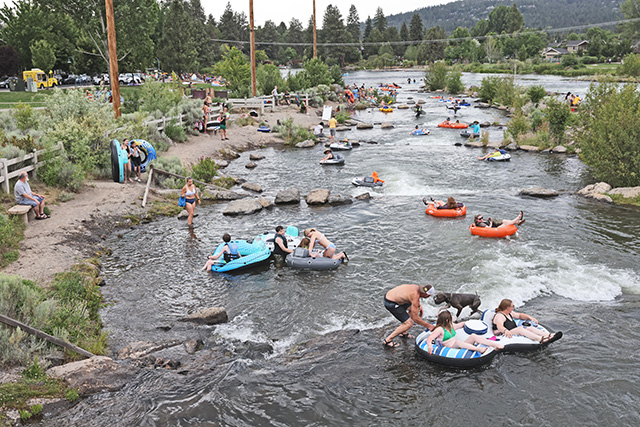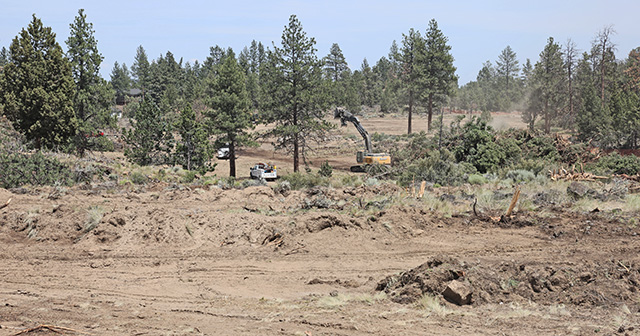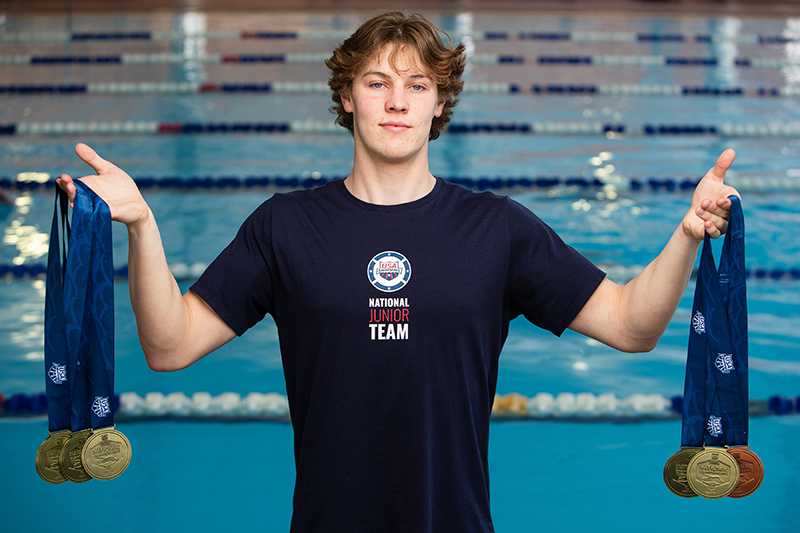Though ice is lacking, desert warms up to a frozen game
Published 12:00 am Sunday, December 28, 2014

- Jarod Opperman / New York Times News ServiceThe Phoenix Junior Coyotes warm up prior to a hockey game at Oceanside Ice Arena in Tempe, Arizona. The sparse crowds for NHL games in Phoenix belies a flourishing youth scene and the thriving hockey program at Arizona State, headed to Division I.
TEMPE, Ariz. — The teenage boys in pressed black pants and shiny black dress shoes stumbled out of sedans and sport utility vehicles. They sleepily tapped at the cars’ liftbacks, which yawned open to reveal bulky equipment bags that the boys slung over their shoulders. It was daybreak on a recent Saturday, and the Phoenix Junior Coyotes and the Arizona Bobcats, 17-member bantam hockey teams, streamed into the Oceanside Ice Arena to renew a rivalry as prickly as the native cactuses.
The NHL blue bloods who watch the struggling Arizona Coyotes playing night after night in front of sparse crowds at Gila River Arena and question the viability of hockey in the Southwest cannot see the game’s germination here. They are overlooking the flourishing youth scene and the thriving program at Arizona State University, which is the reigning champion of the American Collegiate Hockey Association and is bound for NCAA Division I.
Proof that hockey has taken root here exists in the prodigy that is Auston Matthews, a standout center on the U.S. squad competing this week in the International Ice Hockey Federation World Junior Championship in Canada. The Scottsdale-born Matthews, 17, calls to mind a young Johnny Depp, and flashes more skills than Edward Scissorhands. Matthews, a two-way forward and left-handed shooter, is a powerful skater with an artist’s eye, and he is the youngest player on the team.
If not for the fact that he entered the world nearly two weeks after his scheduled due date, Matthews, 6 feet tall and 199 pounds, would be considered a high pick in the NHL draft in June. Born two days after the cutoff for consideration in 2015, Matthews could become in 2016 the first No. 1 overall pick from a nontraditional hockey market. The only Arizona native among active NHL players is Sean Couturier, who was raised in Canada but born in Phoenix, where his father skated for the minor league Roadrunners.
The Coyotes moved to Arizona from Winnipeg, Manitoba, in July 1996. Matthews, the second of three children and the only son of Brian and Ema, arrived 15 months later, on Sept. 17, 1997. As a toddler he attended his first NHL game with his father, and his uncle, Billy Matthews, a Coyotes season-ticket holder. “I remember it being really loud,” Matthews said.
Shortly after his sixth birthday, Matthews surprised his father by stating a desire to play hockey. His father has videotape of Matthews’ first trip around the ice.
“He had a very big grin on his face,” Brian Matthews said. “I remember seeing that smile and thinking, ‘Dang, this is going to be an expensive sport.’”
Matthews said his mother worked two jobs to pay for his hockey expenses, which included extensive travel for tournaments and reached upward of $20,000 some years, according to his father. It was not like baseball, in which he could buy his son a mitt, a bat and a ball and take him to the sandlot. Among the children in Matthews’ middle-class neighborhood, baseball was the most popular activity.
There are fewer than a dozen rinks in the Phoenix metro area, but the difficulty of procuring ice time did not deter Matthews. He excelled at both hockey and baseball, but there was never a question which sport he would pursue. His parents joke that they did not bother getting braces for Matthews because they knew his teeth were not long for his mouth.
“I think he loved baseball,” Brian Matthews said of his son, whose favorite position was catcher, “but there was too much standing around for him. If he could have batted every 15 seconds he would have loved it. Waiting around for the pitcher to throw the ball, it wasn’t active enough for him.”
Matthews was on the cusp of adolescence, he said, when hockey “kind of took over.” He explained: “I was missing a lot of baseball practices because I always wanted to be on the rink shooting pucks. So my parents could tell hockey was my No. 1 passion.”
For aspiring pro hockey players, the two main rinks are Oceanside Ice Arena, which is home to ASU, and the Ice Den, where the NHL’s Coyotes practice. At both places, retired NHL players come with the scenery. At youth games, the benches are alive with chalk talk from former players serving as volunteer coaches for their children’s teams. At the bantam game, Shawn McCosh, who played for the Los Angeles Kings and the New York Rangers, coached the Junior Coyotes. Assisting him was the retired goaltender Corey Hirsch.
With relatively few rinks, Arizona has a high concentration of coaches, including non-NHLers like Brad Bayer, Ron Filion and Boris Dorozhenko, who were instrumental in Matthews’ development, his father said. That is the upside. The downside, as noted by McCosh, who grew up outside Toronto, is that young players cannot while away the winters, as he did, working on their stick skills and stoking their creativity in their flooded backyards or on frozen ponds.
“I think in Arizona what happens is everyone’s looking for that coach, that person, to put their kid over the top,” McCosh said, “and what gets lost is that when it comes right down to it, the kid has to have the inner drive to put in the extra work to succeed.”
Motivation never has been an issue for Matthews, whose work ethic has drawn praise from USA Hockey staff members. He knows he faces long odds to succeed, not unlike his great-uncle, Wes Matthews, who matriculated to the NFL in the 1960s from a small program, Northeastern State in Oklahoma. Wes Matthews, an undrafted wide receiver, said he was permitted a one-year deferment from the Vietnam War to play for the Miami Dolphins in 1966.
Coming out of Northeastern State, where he played football and baseball, Wes Matthews said he questioned whether he could compete with athletes from the traditional football powerhouses. He succeeded by whittling football to its competitive core. “It’s mano a mano; you against the other guy,” Wes Matthews said.
He has imparted the same message to his grandnephew, most recently last week when Matthews was in Boston for a USA Hockey training camp in advance of the World Junior Championship in Montreal and Toronto.
“I said, ‘Look, every time you play, whether it’s a minute, a minute and 30 seconds, when you climb over the side rail, if you’re not giving it your all, you’re cheating yourself and you’re cheating your team,’” Wes Matthews said.
A high school junior who is home-schooled, Matthews is taking an accelerated course load so he can enroll in college next fall, if he decides to play NCAA Division I hockey. The Western Hockey League team in Everett, Washington, holds his rights if he opts for major junior competition instead.
Many of the players in the game between the Bobcats and the Junior Coyotes, won by the Bobcats, were drawn to the game by Shane Doan, the Coyotes’ captain and longtime fan favorite, but they now have a peer to emulate.
“They’ll always idolize the NHL players,” said Hirsch, the retired goaltender, “but the inspiration will come from kids like Auston Matthews, because he grew up here and they can look at him and see that if you grow up in Arizona, you can make it.”







